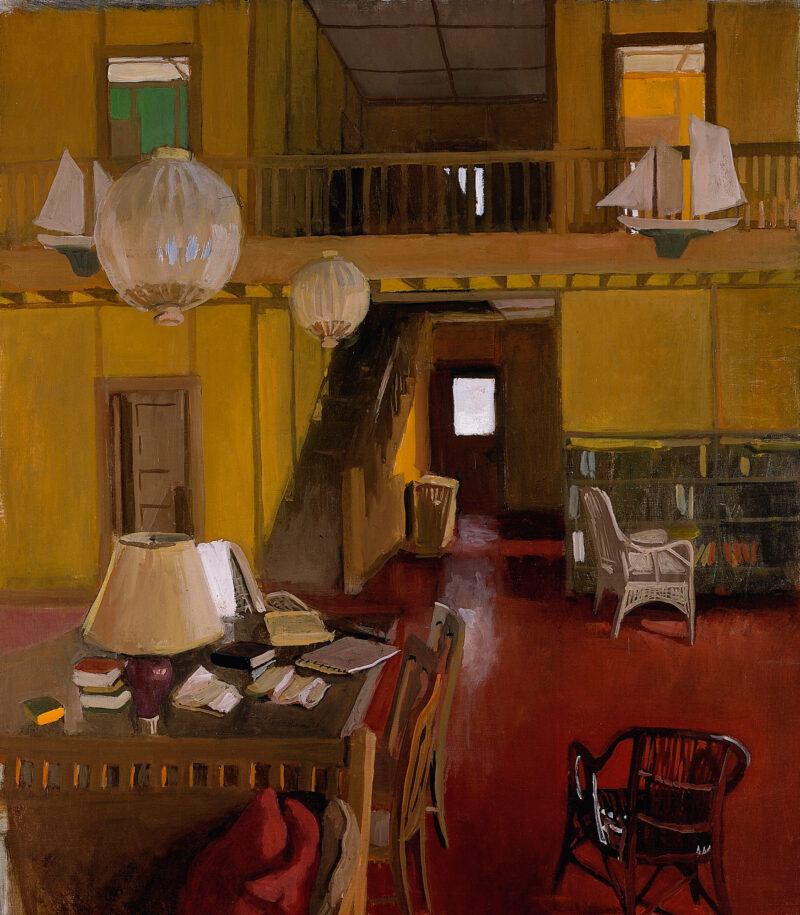
Yellow Room
Porter, Fairfield
1961, July
Artwork Information
-
Title:
Yellow Room
-
Artist:
Porter, Fairfield
-
Artist Bio:
American, 1907–1975
-
Date:
1961, July
-
Medium:
Oil on canvas
-
Dimensions:
46 1/2 x 40 1/2 inches
-
Credit Line:
Wichita Art Museum, Museum purchase, Burneta Adair Endowment Fund and Mildred H. Wood Estate
-
Object Number:
1999.2
-
Display:
Not Currently on Display
About the Artwork
Recording the look of ordinary places and people in a straightforward, yet painterly realist style, Porter formed a link between the terse realism of Edward Hopper and the broad painterly abstraction of Willem de Kooning. Like the Abstract Expressionists, Porter made the viewer aware of the painting as an independent material object. His paint read as “paint” rather than as the surface texture of objects. At the same time Porter maintained an older American tradition of painting as an intuitive response to the physical presence of the everyday world. Porter was a talented art critic as well as a painter and wrote what is now regarded as some of the most original commentary upon contemporary painting of the 1950s and 1960s.
Yellow Room dates from the prime of Porter’s career and represents a principal theme in his oeuvre, that of a domestic interior articulated by light. This particular interior was a subject to which Porter returned many times, and one which was, in the artist’s own estimation, of great personal significance. From the time he was six years old Porter regularly spent summers in this living room in the family’s summer home on great Spruce Head Island in Penobscot Bay, Maine. His father, Chicago architect James Porter, purchased the island and designed the house in 1912. Porter spoke of his childhood summers at Great Spruce Head Island with his parents and four siblings as his “personal golden age” and explained that “if I paint that house in Maine I’m also painting a portrait of my father.”